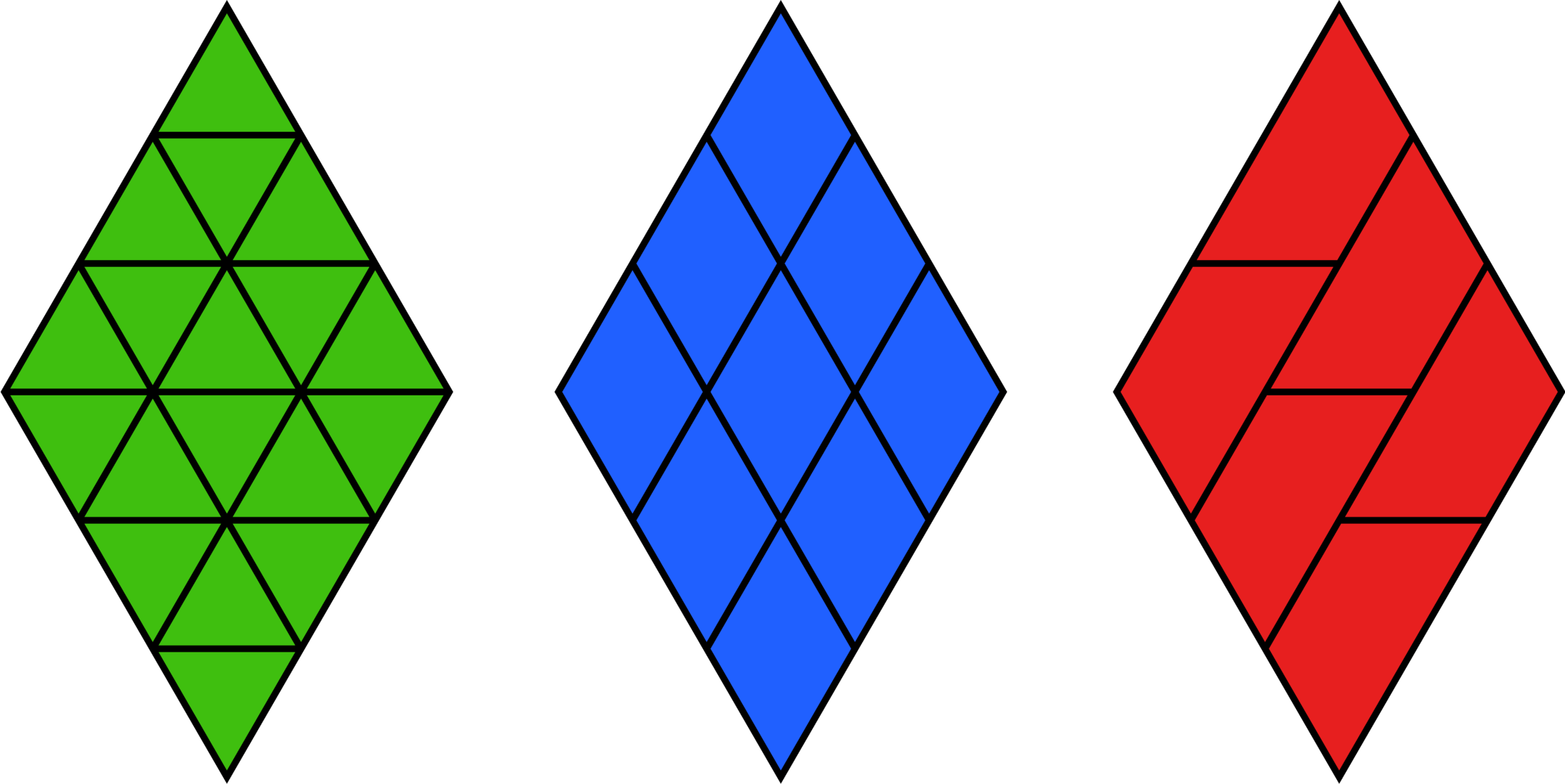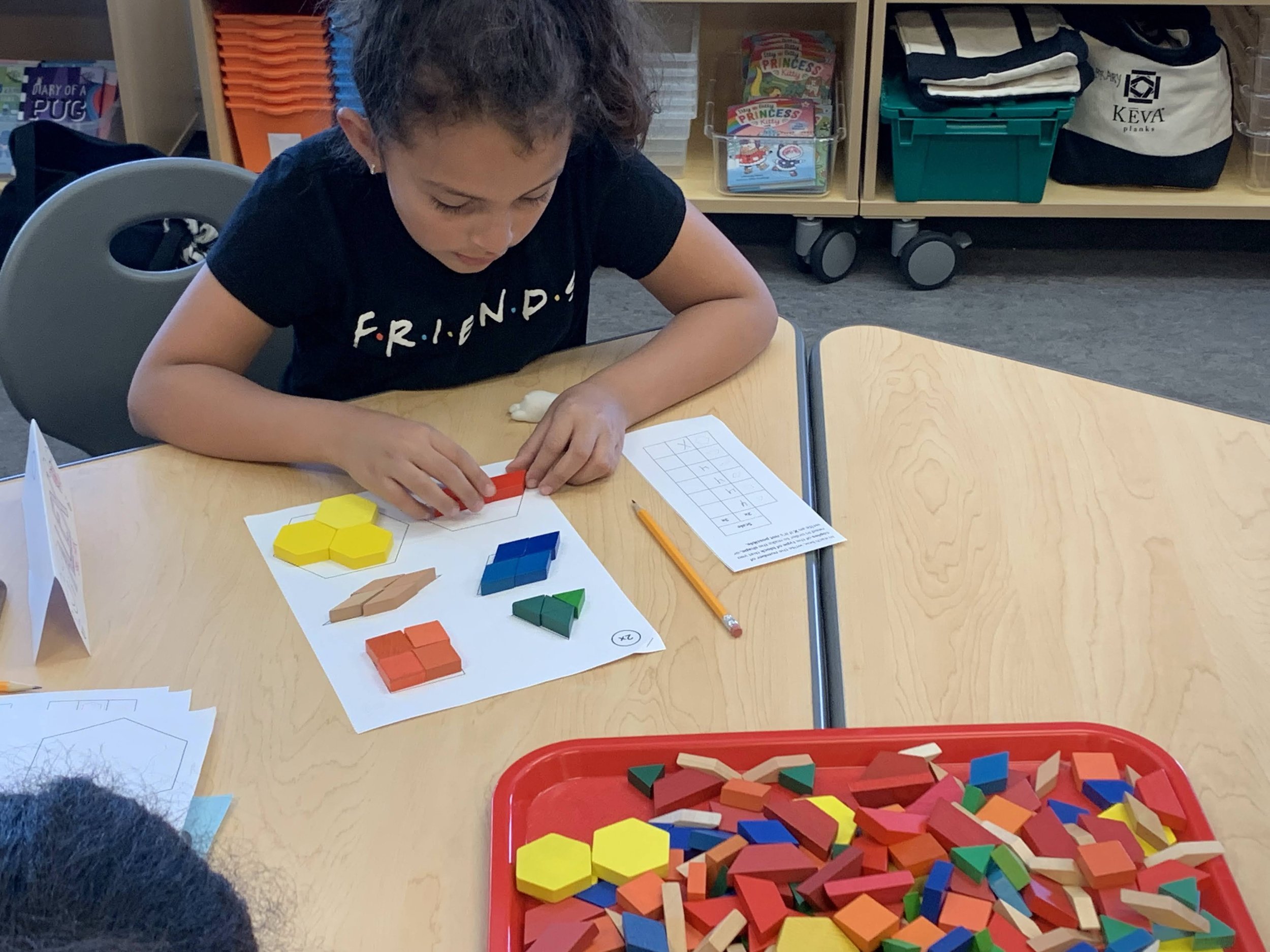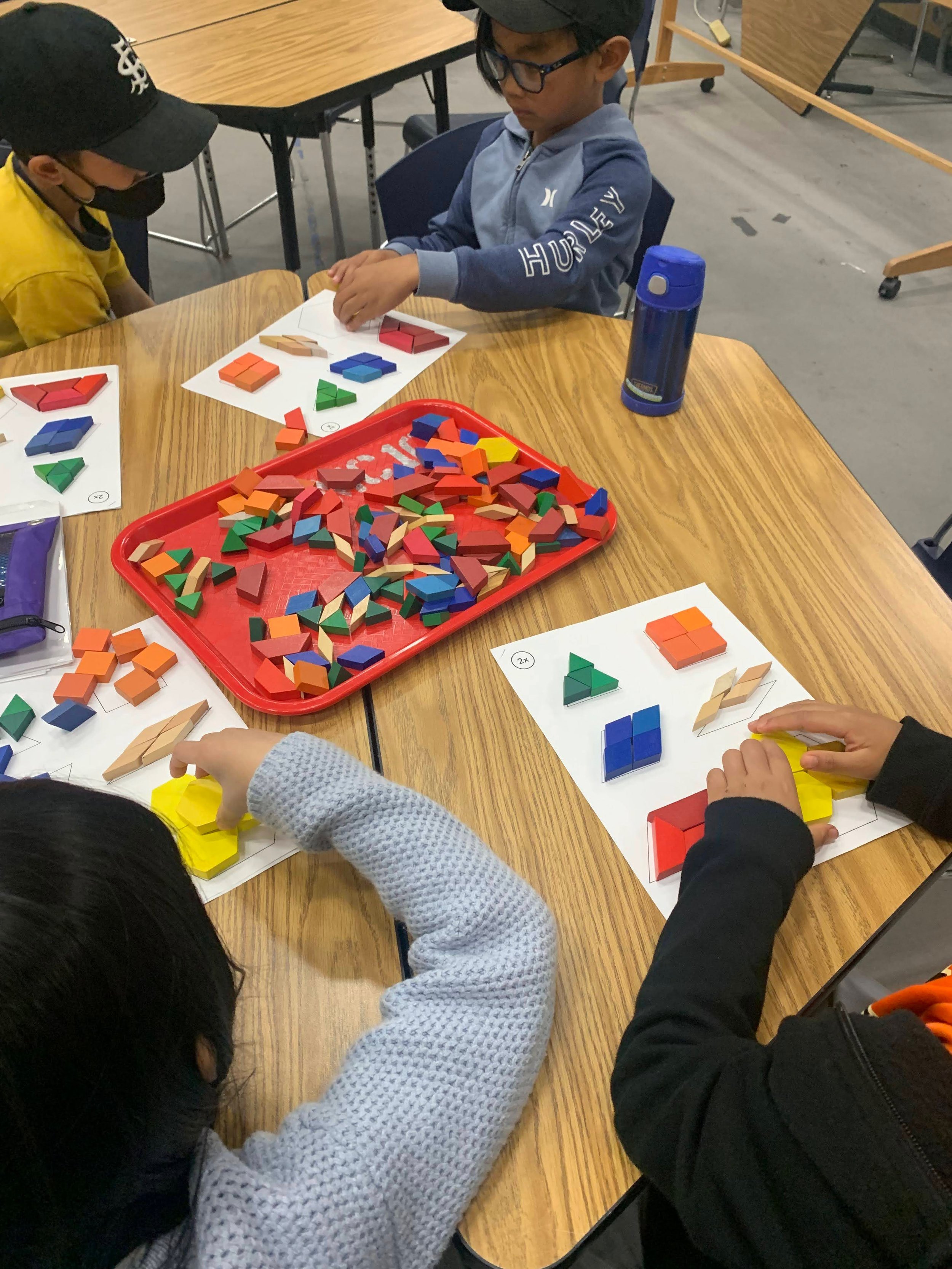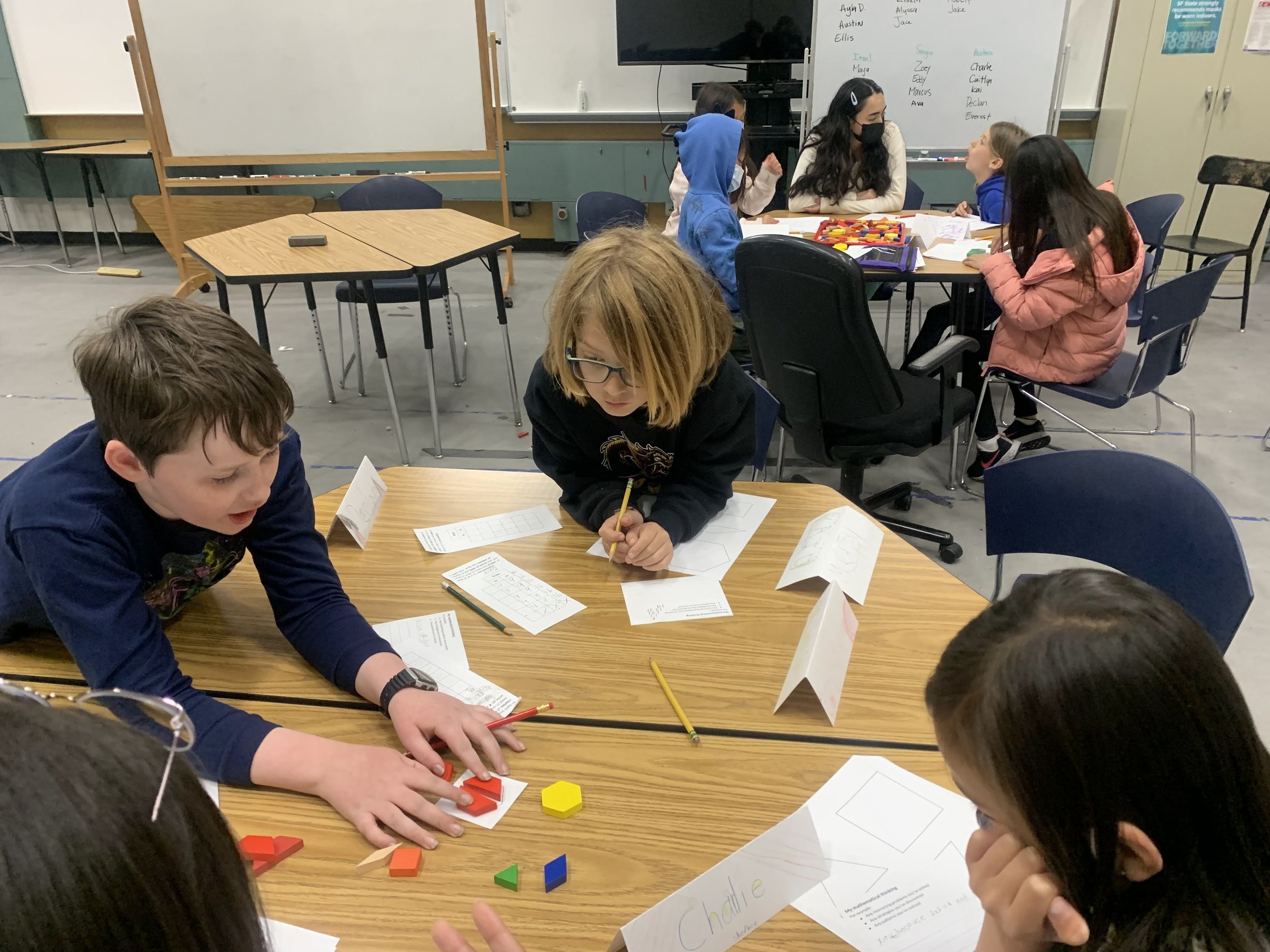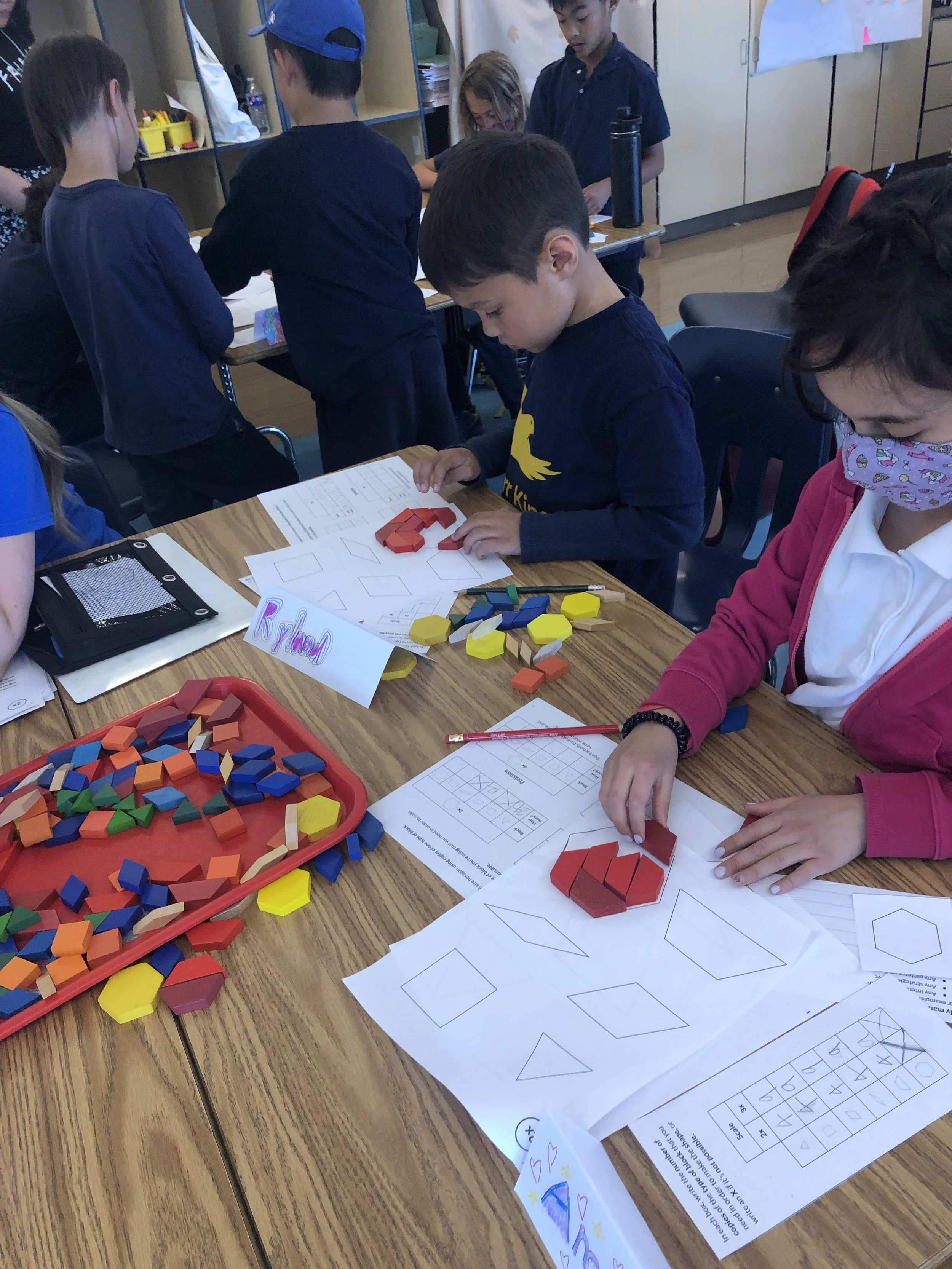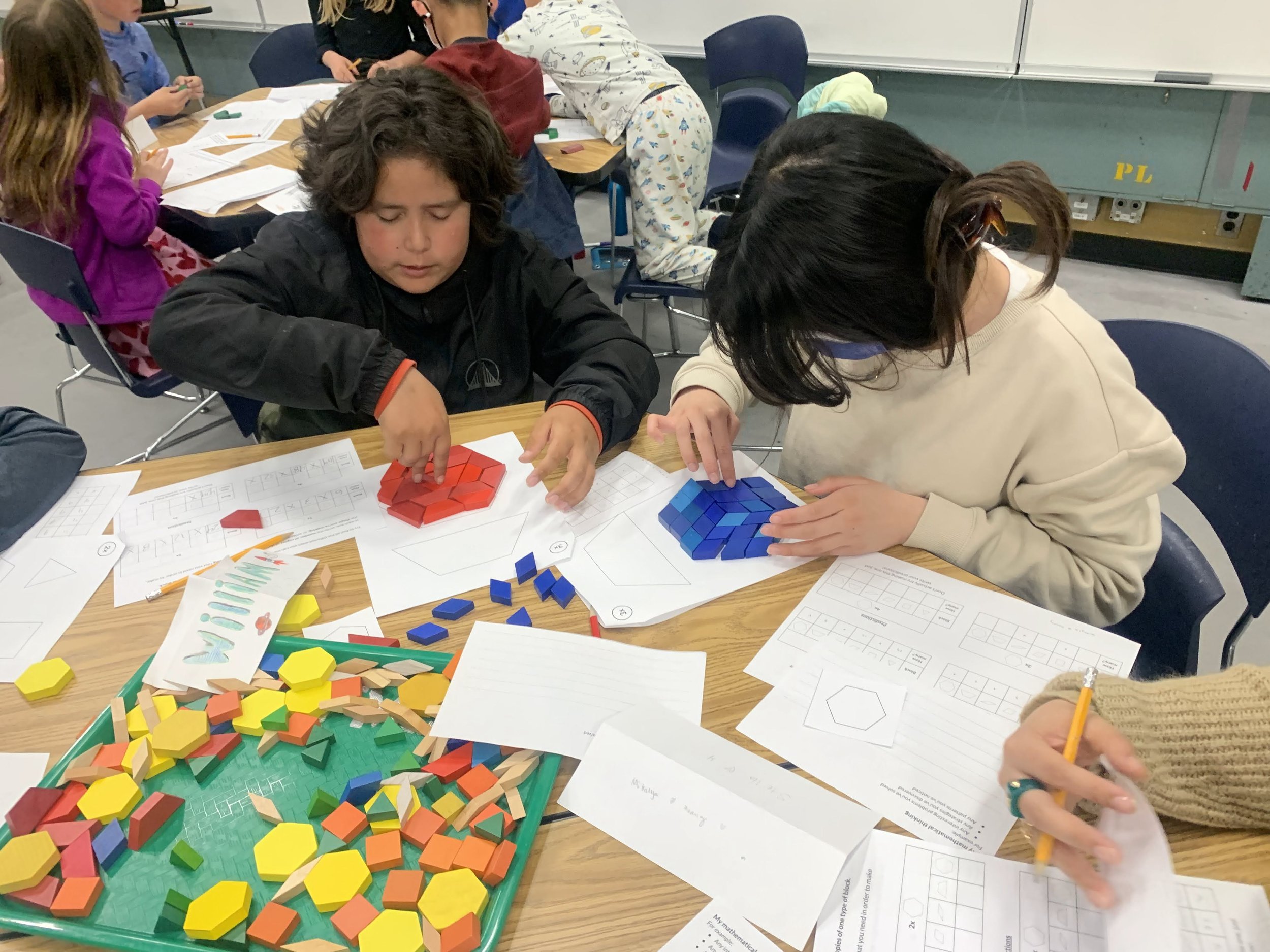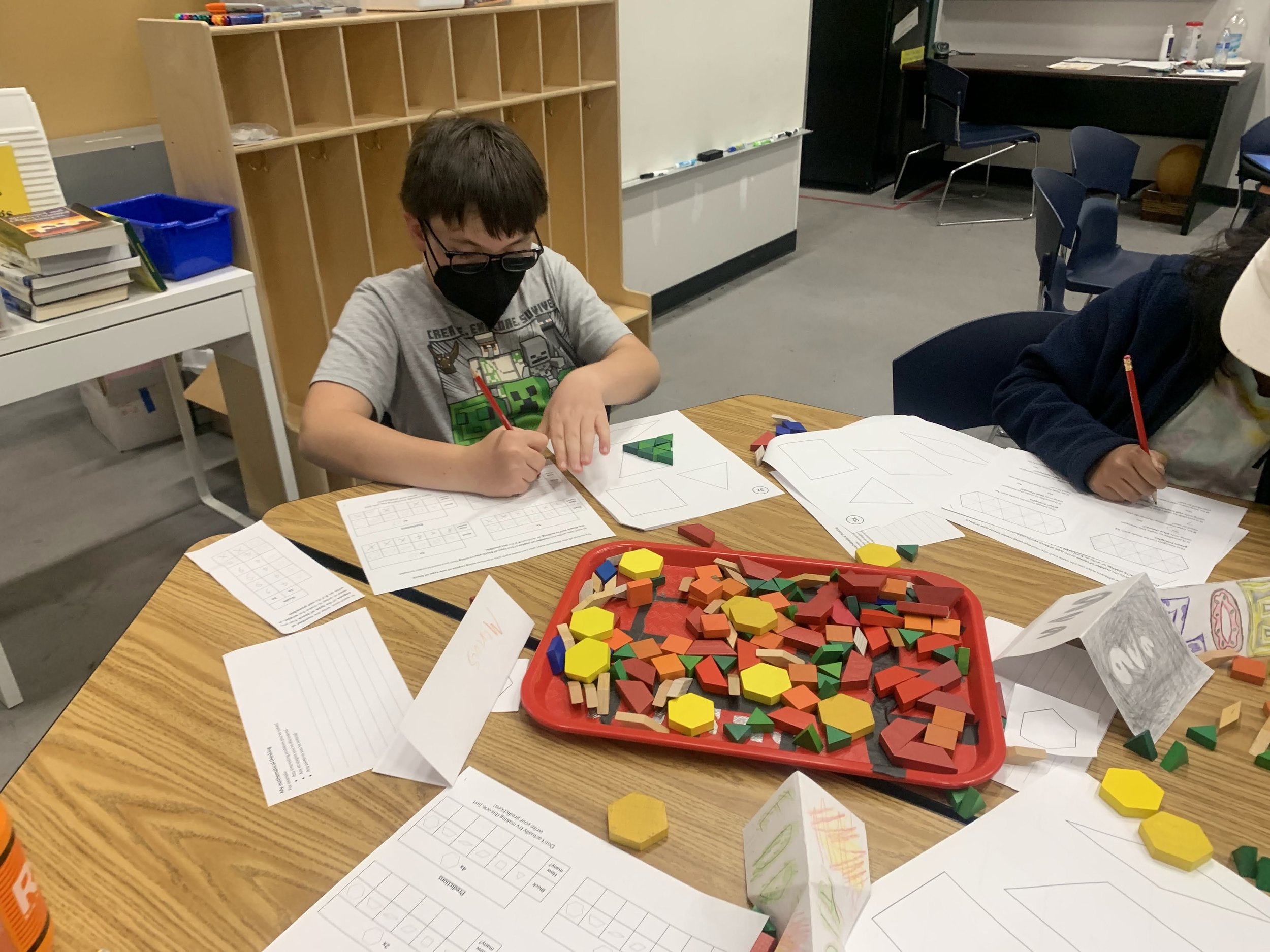Rep-Tiles
How it works
Pattern blocks come in 6 different colors and shapes:

For each type of pattern block, can you use copies of only that type of pattern block to make a larger version of that shape? (This is called a rep-tile for the shape, because you are using replicas of the pattern block to tile the shape.) Can you use copies of only that type of pattern block to make any other pattern block shapes? When this is possible, how many copies do you need to use?
In this activity, students try to make 2x and 3x versions of the basic pattern block shapes. First, they try to do this using only copies of the pattern block that matches the shape (for example, using only green triangle pattern blocks to make larger versions of the green triangle pattern block shape). Next, they try to do this using copies of pattern blocks that don’t match the shape being tiled (for example, using only green triangle pattern blocks to make larger versions of the yellow hexagon pattern block shape). In each case, when it is possible to make the shape, students determine how many blocks are required. They're encouraged to try to find strategies that are more efficient than making the shape and counting blocks one by one!
Self-Rep-Tile Data Recording handout
Mimic Rep-Tile Data Recording handout
Hexagon Mimic Rep-Tiles handout
Why we like this activity
It’s fun! Students enjoy trying to make the different shapes and figuring out how many blocks they need.
It helps students develop geometric reasoning.
It helps to develop numerical reasoning.
It requires students to engage in mathematical habits of mind:
- Using logic, finding and using strategies, looking for patterns, and making and testing predictions when trying to figure out how many blocks are required to make different shapes
It has a low floor and a high ceiling: Students can get started making shapes by trial and error, but there’s a lot to discover and figure out about how many blocks of each type it takes to tile shapes of different sizes.

